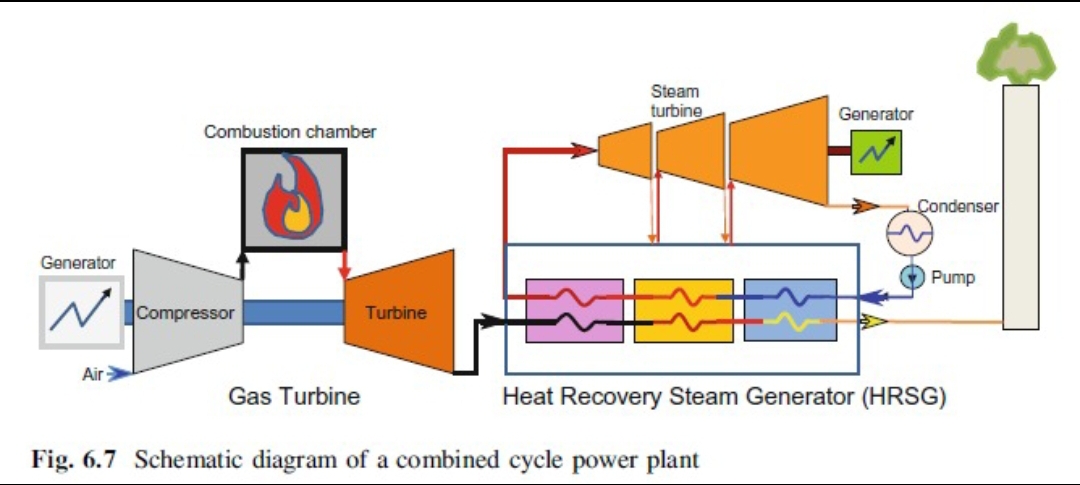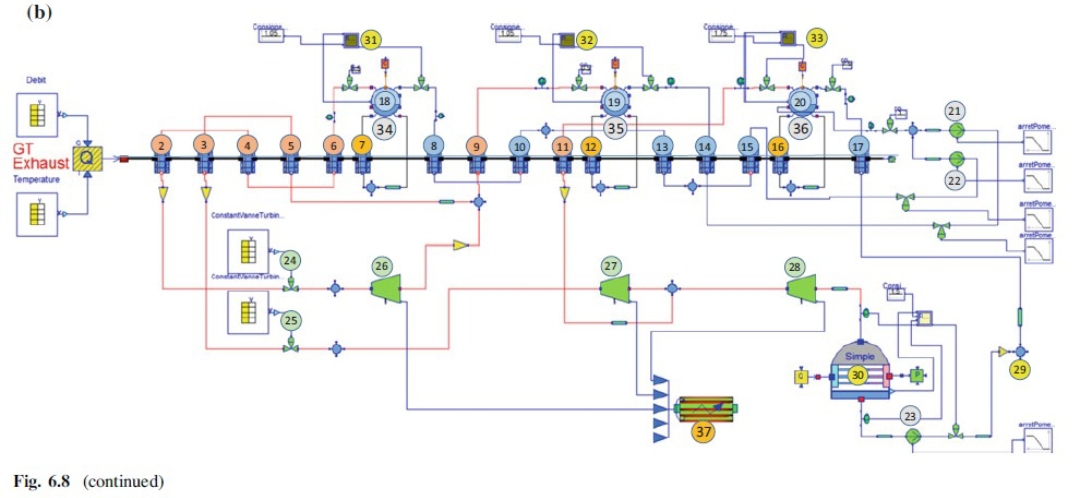Difference between revisions of "Muhammad Fakhri Nuh"
Fakhri Nuh (talk | contribs) |
Fakhri Nuh (talk | contribs) |
||
| Line 16: | Line 16: | ||
In taking parts to contribute as an engineer, with education and knowledge that can lead into creating innovations in technology, we may implemented it in terms to advance the less developed areas such as creating power plants to distribute electricity so that all people may receive and having equal access into it. | In taking parts to contribute as an engineer, with education and knowledge that can lead into creating innovations in technology, we may implemented it in terms to advance the less developed areas such as creating power plants to distribute electricity so that all people may receive and having equal access into it. | ||
| − | The Law of Conservation of Energy states that energy can not be created or destroyed which is in another words, total energy of a system remains constant. Two basic forms, the kinetic and potential energy both are usually found and applied in our daily life. Back to the basic itself, what is the definition of an energy? If I were given a chance to explain it to an elementary student, or other people that have no opportunity to gain information on that, I would make it as simple as energy is a "fuel" for some object to move. What I mean, those "fuel" is having a process and making an ability so that the object could move. An analogical concept, if people who liked to do such an exhausting sports activity like football or etc, and they did not consume food or drink before doing those activity, will they still be able to move? Normally people will collapse due to exhausted of their energy, The same concept goes into a car, if it were not given a fuel, the car won't be able to move. | + | '''24/02/2021 |
| + | ''' | ||
| + | |||
| + | |||
| + | Our previous discussion about The Law of Conservation of Energy states that energy can not be created or destroyed which is in another words, total energy of a system remains constant. Two basic forms, the kinetic and potential energy both are usually found and applied in our daily life. Back to the basic itself, what is the definition of an energy? If I were given a chance to explain it to an elementary student, or other people that have no opportunity to gain information on that, I would make it as simple as energy is a "fuel" for some object to move. What I mean, those "fuel" is having a process and making an ability so that the object could move. An analogical concept, if people who liked to do such an exhausting sports activity like football or etc, and they did not consume food or drink before doing those activity, will they still be able to move? Normally people will collapse due to exhausted of their energy, The same concept goes into a car, if it were not given a fuel, the car won't be able to move. | ||
All of the engineering courses that we have taken as an engineering student are needed for us to know the importance of its application. For example fluid mechanics as a branch of physics taught us to learn the behaviour of fluid itself and can be applied into many engineering system such as hydraulic, dynamic fluid flow through a pipe, etc. | All of the engineering courses that we have taken as an engineering student are needed for us to know the importance of its application. For example fluid mechanics as a branch of physics taught us to learn the behaviour of fluid itself and can be applied into many engineering system such as hydraulic, dynamic fluid flow through a pipe, etc. | ||
| Line 24: | Line 28: | ||
[[File:Combine Cycle Power Plant.jpg]] | [[File:Combine Cycle Power Plant.jpg]] | ||
| − | + | We also managed to learn and were introduce on how to use an operational tools called Openmodelica, In this figure below it shows the structure of the combined cycle power plant : | |
| + | |||
(1) gas turbine; (2), (4), and (6) HP super-heaters; (3), (5), and (9) IP super-heaters; | (1) gas turbine; (2), (4), and (6) HP super-heaters; (3), (5), and (9) IP super-heaters; | ||
(11) LP super-heater; (7) HP evaporator; (12) IP evaporator; (16) BP evaporator; | (11) LP super-heater; (7) HP evaporator; (12) IP evaporator; (16) BP evaporator; | ||
Revision as of 14:11, 3 March 2021
Name: Muhammad Fakhri Nuh NPM: 1806187884
Place and date of birth: Depok, 12th September 2000
Hobby and Interest: Football, Drawing and Sketching
I am a Mechanical Engineering student at the University of Indonesia. On this 6th semester, I'm looking forward to learn about Energy Conversion, which can be described in many ways as a changing process of different forms of energy including heat, work, and motion. As an engineering student, my motivation comes starting from the nearest people I've known which are my family member especially my parents. In order to fulfill their expectation on me to become a person who can be usefull and make positive changes at least to my own surrounding, I'm taking this Mechanical Engineering major to gain all of the knowledge as much as possible and hope it can be applied in the real life.
23/02/2021
On this first meeting, we began our lecturer with discussing the meaning of social justice and its correlation to us, as an engineering student. For me, the interpretation of justice is in terms of giving people equal rights, opportunity, and treatment. This should be applied in all life aspects, so it is needed to understand to know how important social justice is while living in a social life, making a prosperous and formed a fair community life. In taking parts to contribute as an engineer, with education and knowledge that can lead into creating innovations in technology, we may implemented it in terms to advance the less developed areas such as creating power plants to distribute electricity so that all people may receive and having equal access into it.
24/02/2021
Our previous discussion about The Law of Conservation of Energy states that energy can not be created or destroyed which is in another words, total energy of a system remains constant. Two basic forms, the kinetic and potential energy both are usually found and applied in our daily life. Back to the basic itself, what is the definition of an energy? If I were given a chance to explain it to an elementary student, or other people that have no opportunity to gain information on that, I would make it as simple as energy is a "fuel" for some object to move. What I mean, those "fuel" is having a process and making an ability so that the object could move. An analogical concept, if people who liked to do such an exhausting sports activity like football or etc, and they did not consume food or drink before doing those activity, will they still be able to move? Normally people will collapse due to exhausted of their energy, The same concept goes into a car, if it were not given a fuel, the car won't be able to move.
All of the engineering courses that we have taken as an engineering student are needed for us to know the importance of its application. For example fluid mechanics as a branch of physics taught us to learn the behaviour of fluid itself and can be applied into many engineering system such as hydraulic, dynamic fluid flow through a pipe, etc.
In energy conversion system, we can convert energy into other form. A combine cycle power plant, for example. The schematic diagram shows that inside a gas turbine the fuel will be combusted, heat recovery system capture the exhaust before the steam turbine delivered additional electricity.
We also managed to learn and were introduce on how to use an operational tools called Openmodelica, In this figure below it shows the structure of the combined cycle power plant :
(1) gas turbine; (2), (4), and (6) HP super-heaters; (3), (5), and (9) IP super-heaters; (11) LP super-heater; (7) HP evaporator; (12) IP evaporator; (16) BP evaporator; (8), (10), (13), and (15) HP economizers; (14) IP economizer; (17) LP economizer; (18) HP drum; (19) IP drum; (20) LP drum; (22) HP pump; (21) IP pump; (23) LP pump; (24) HP steam governor valve; (25) IP steam governor valve; (26) HP steam turbine; (27) IP steam turbine; (28) LP steam turbine; (29) volume; (30) condenser; (31) HP drum-level control; (32) IP drum-level control; (33) LP drum-level control; (34) HP evaporating loop; (35) IP evaporating loop; (36) LP evaporating loop; and (37) electric generator.


